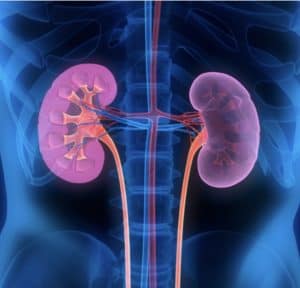Sleeping pill addiction intro
- Benzodiazepines are sedative medications for first-line treatment in depression and other mental illnesses such as seizures, anxiety, insomnia, panic attacks, alcohol withdrawal, etc.
- Benzodiazepines are one of the most commonly prescribed medicines in the USA.
- Short-term use of benzodiazepines is safe and effective but long-term use can lead to functional changes in the brain causing tolerance by decreasing the responsiveness to the use of the drug.
- Individuals who develop tolerance require larger doses of the drug to achieve the desired effect.
- Over time, consuming larger doses of the drug induces the onset of dependency and addiction.
- When the brain does not get the desired dose or these drugs are stopped abruptly, withdrawal syndrome is triggered that can be dangerous and fatal.
- Benzodiazepine addiction occurs when a person takes drugs for more than 6 months and this leads to a negative impact on physical and mental health, occupational and social functioning, as well as increases the risk of serious injuries.
How do benzodiazepines act on our bodies?
- Benzodiazepines act widely in the brain affecting emotional reactions, memory, thinking, control consciousness, muscle tone, and coordination.
- These drugs stimulate the activity of the neurotransmitter, gamma-aminobutyric acid (GABA) in the brain by acting on their receptors. Gamma-aminobutyric acid enhances the inhibitory brain signals thus depressing the central nervous system resulting in reduced brain activity, sedation, and relaxation.
Commonly used benzodiazepines are
- Lorazepam
- Alprazolam
- Clonazepam
- Diazepam
- Clobazam
- Midazolam
When does an individual get benzodiazipine dependency?
Abuse of a prescription-
Benzodiazepines are normally prescribed by a physician for legitimate medical conditions such as anxiety, insomnia, etc. Addiction occurs when-
- Drugs are taken more frequently than prescribed
- Taken in a larger dose than prescribed
- Missed dose
- Mixing medications with other drugs or alcohol
- Saving pills to take later for recreational purpose
Recreational Abuse-
Benzodiazepines can be obtained from a drug dealer on the street. These are often taken for euphoric and relaxation purposes without any medical illness. Such as- peer pressure, to cope with stressful conditions, etc.

Signs and symptoms of benzodiazepine dependency
Physical/Mental changes:
- Anorexia
- Fatigue
- Blurred vision
- Drowsiness
- Hallucinations
- Confusion
- Decreased libido
- Respiratory depression
Behavioral changes:
- Impaired memory and attention
- Poor concentration
- Poor judgment and thinking capacity
- Poor performance in work and study
- Absent from work/school
- Loss of relationships
- Familial problems, such as domestic abuse, child neglect, or divorce
- Lack of interest in activities that were once enjoyable
- Risk of accidental injuries such as car crash, fall, etc.
- Risk of overdose
- Self-harm and Suicidal tendency
- Polysubstance abuse with alcohol, cannabinoids (marijuana), etc
Benzodiazepines withdrawal
Withdrawal symptoms occur when an individual taking drugs in a small amount for a long duration or larger doses for a short time suddenly stops the drugs. It starts 1-4 days after the last dose. Symptoms include-
- Sleeping difficulty
- Irritability
- Anxiety
- Panic attacks/seizures
- Hand tremors
- Palpitations, increased heart rate
- Headache
- Muscle pain and stiffness
Treatment of benzodiazepine dependency
- Psychotherapy and counseling to help address the underlying cause of the addiction
- Cognitive behavioral therapy (CBT)
- Rehabilitation centers
- Social support from friends are family
- Detox-
The addictive medication is gradually withdrawn by initially lowering the dose (slow taper) until total abstinence and the symptoms associated with the withdrawal are managed using a substitute drug followed by a rehabilitation program. Tapering can be done with a longer-acting agent, e.g., diazepam/clonazepam, or with the agent that the patient is taking. Tapering can be done is the following ways-
- Reduce the dose by less than 10% of the original dose every 1–2 weeks until the dose is at 20% of the initial dose, then taper by 5% every 2–4 weeks.
- After substituting a longer half-life drug (eg. diazepam), calculate the benzodiazepine equivalence and give 50 percent of the original dosage. For example, Alprazolam/Clonazepam 0.5 mg and Lorazepam 1 mg is equivalent to 10 mg Diazepam. (equivalent chart is given below)
This will ensure that a person can quit benzodiazepine abuse without suffering from major withdrawal symptoms.
- Use of benzodiazepines alternatives-
- Antidepressants (SSRI, eg. sertraline)
- Buspirone
How long does it take to overcome benzodiazepine dependency?
The duration of detox depends on the duration of addiction.
- 8 week- 6 months of addiction duration: slow taper over 2-3 weeks
- 6 months-1 year of addiction duration: slow taper over 4-8 weeks
- More than 1 year of addiction duration: 2-4 months
Conclusion
- Benzodiazepine addiction symptoms tend to grow more and more severe as long as they are not treated comprehensively.
- Symptoms do not simply go away. It is vital to seek medical help from a physician.
- Families/friends must take action immediately when they see their closed person suffering from addiction.
- With help, he/she may be able to stop abusing these medications.



